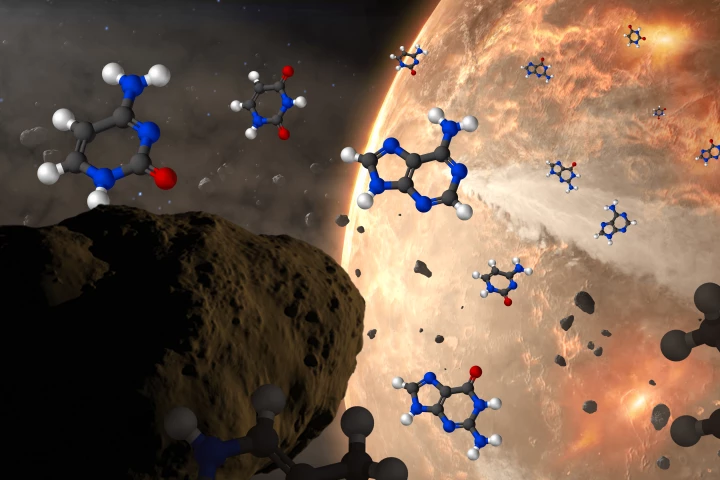Extraterrestrial
-
Scientists debate whether or not there’s life on Venus. A new Cambridge study has analyzed the Venusian atmosphere and found no sign of the chemical fingerprints microbes would be expected to produce – but it doesn’t rule out life on similar planets.
-
UFOs have rarely been taken seriously by the scientific community. But following a recent hearing by the United States Congress into “unidentified aerial phenomena” (UAPs), NASA has now announced that it’s commissioning a team to investigate the mystery.
-
Evidence is mounting that the key building blocks of life may have been delivered to our home planet from space. Scientists have now identified in meteorites the last two DNA nucleobases that hadn’t yet been found in extraterrestrial samples.
-
Astronomers may have detected a new exoplanet around Proxima Centauri, the star closest to our solar system. This tiny new world is one of the lightest ever discovered, which is even more impressive given the technique the team used to find it.
-
Is there microbial life floating around in the clouds of Venus? Scientists have long pondered this question and soon we may get some answers, starting with a cloud-skimming mission in 2023 to search for signs of life.
-
Jezero crater on Mars was chosen as the landing site for the Perseverance rover because satellite images suggested it was once an ancient lake. More direct evidence has now been found, as photos snapped by the rover reveal signs of flash flooding.
-
In the hunt for extraterrestrial life, most of our attention has been focused on Earth-like worlds. But now, astronomers have defined a new class of exoplanet called “Hycean” worlds that could be a promising place to find signs of life.
-
NASA is planning to send a rotorcraft to Saturn's moon Titan, one of the most intriguing places in the solar system. Now the science goals and objectives for the Dragonfly mission have been outlined, with the search for life high on the list.
-
Controversial physicist Avi Loeb is on the hunt for aliens again. His new Galileo Project aims to track unexplained oddities in the sky, study interstellar objects, and even examine the "possibility" of alien satellites watching us from orbit.
-
Something is making methane on Saturn’s moon Enceladus. A new study has found that methane levels detected from the icy moon are far higher than can be explained by known geochemical processes – but they are consistent with microbes.
-
Double star systems may be hiding masses of potentially habitable Earth-sized planets in their combined glare. Roughly half of all stars are thought to exist in binary systems, in which two massive stellar bodies orbit around a common centre of mass.
-
New modeling of water activity on different solar system planets has found that Venus would be too dry for even the most extreme forms of life – but there may be other contenders in our solar system that we hadn’t considered.
Load More










